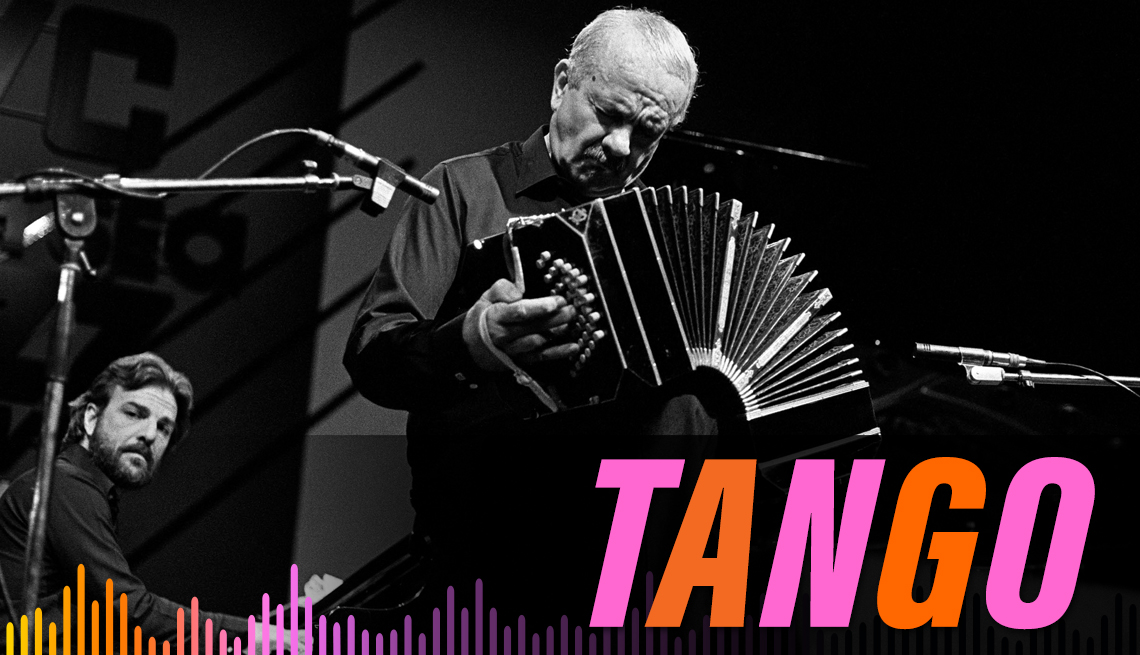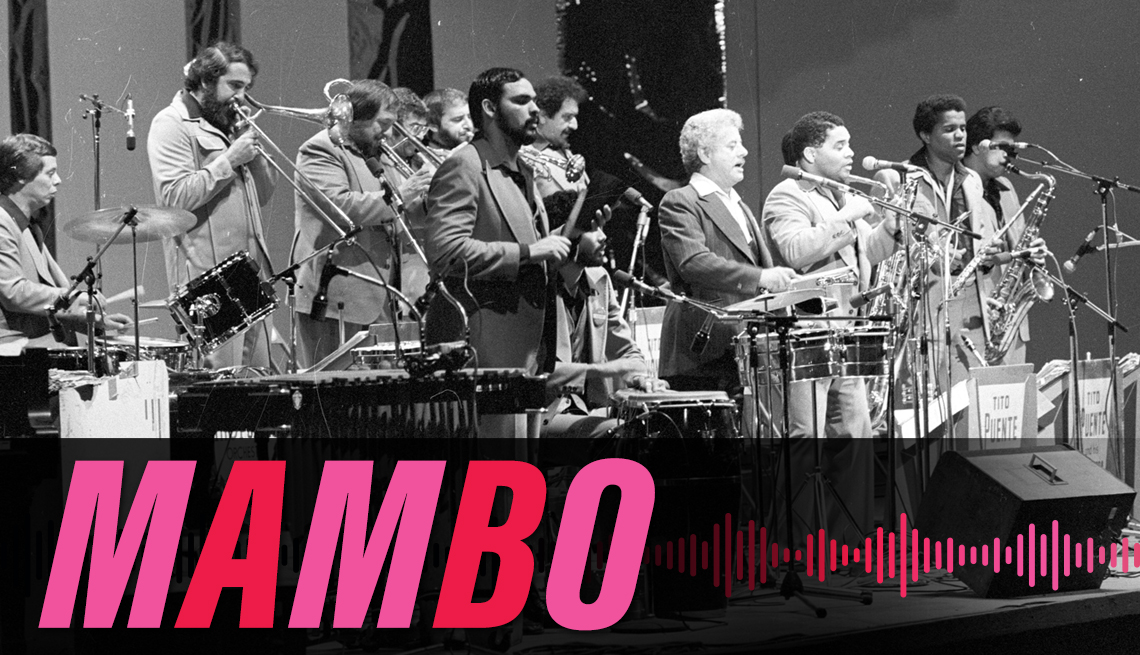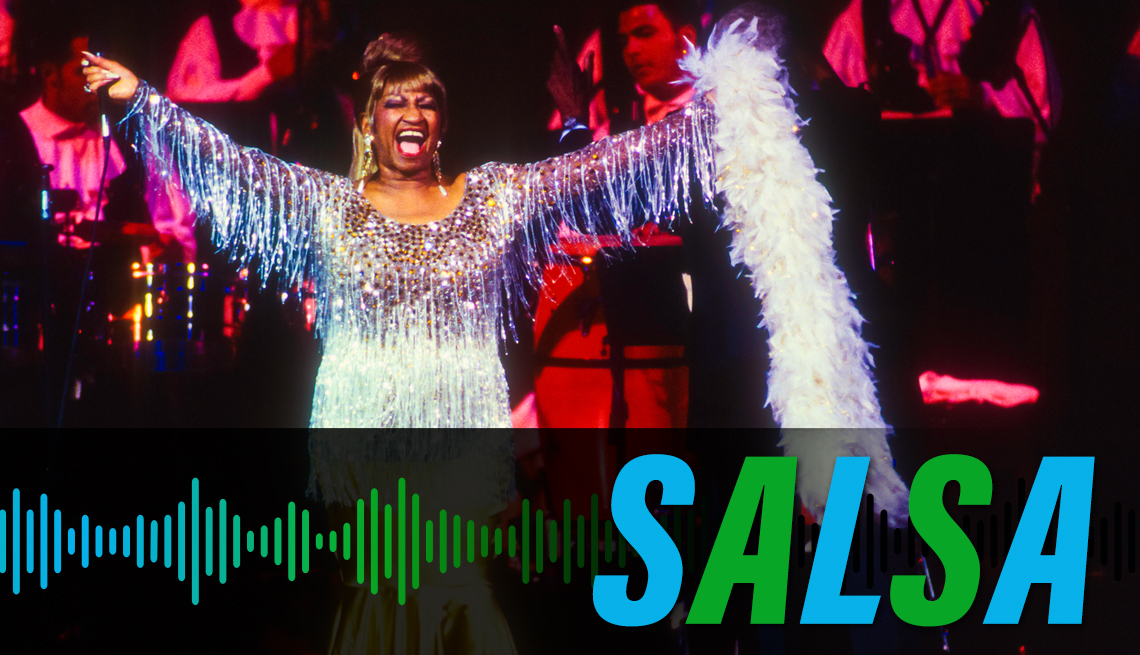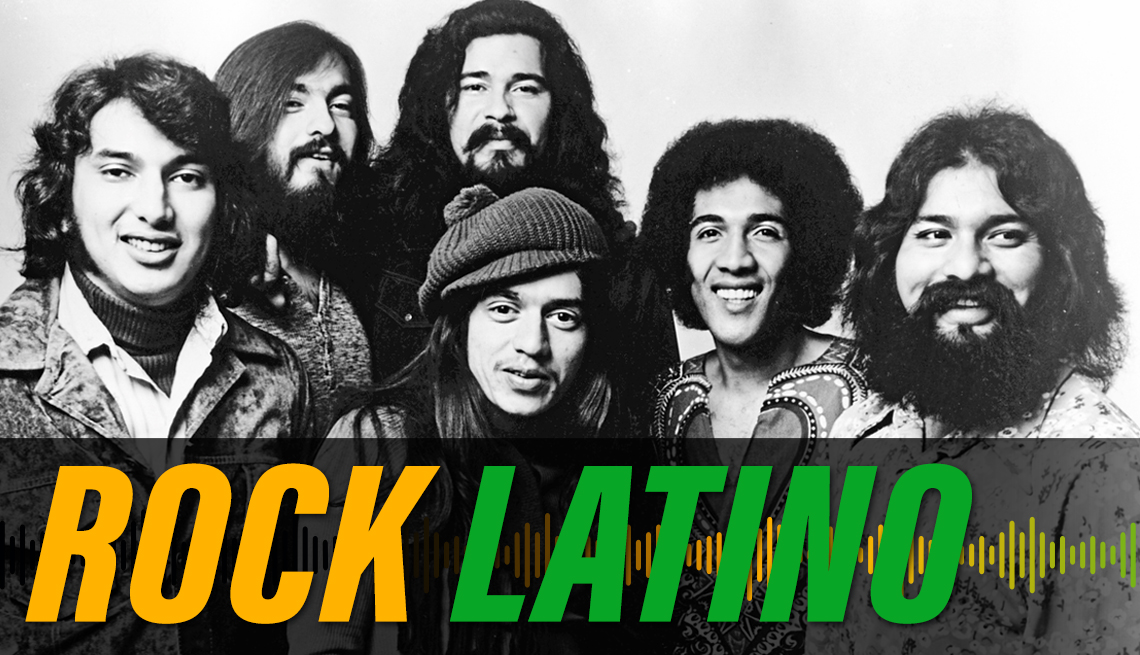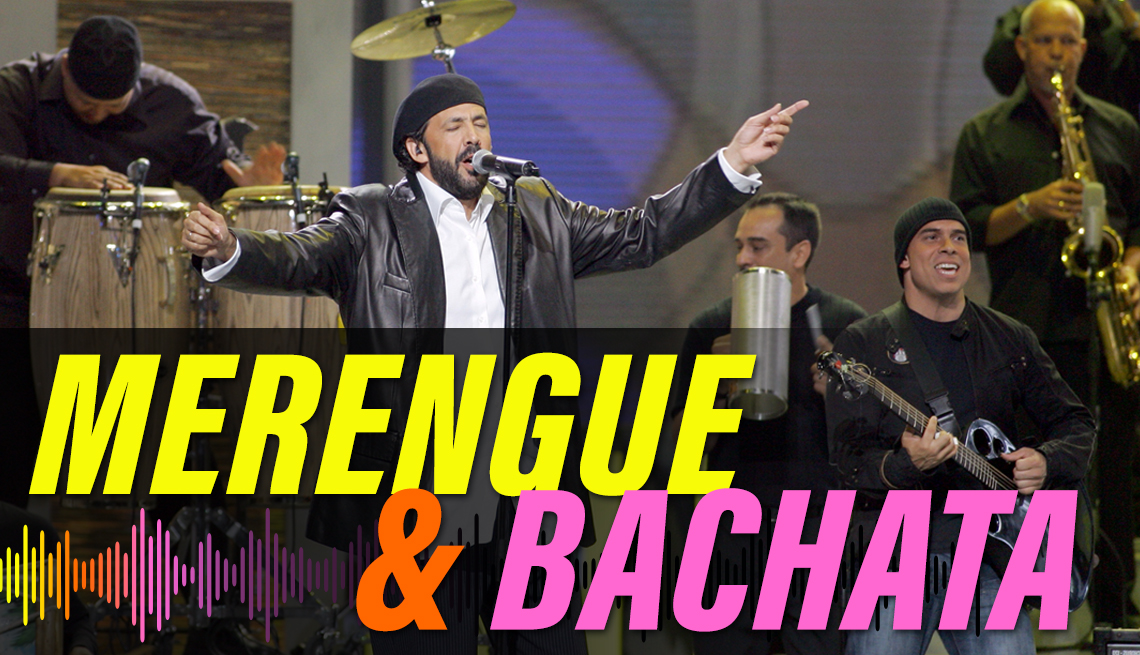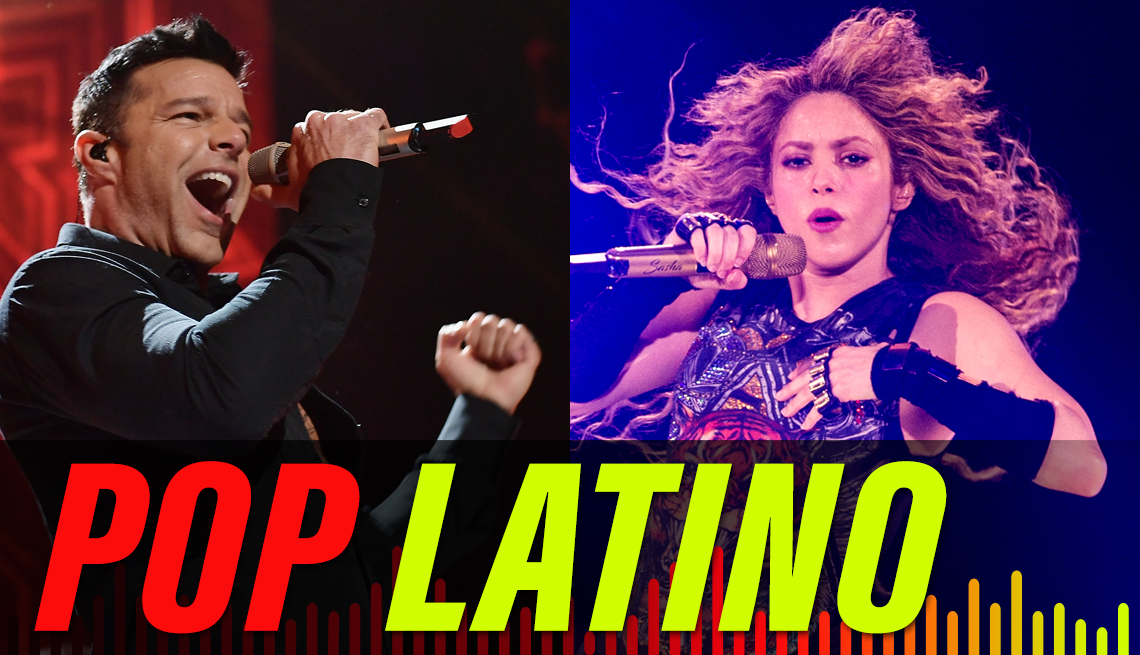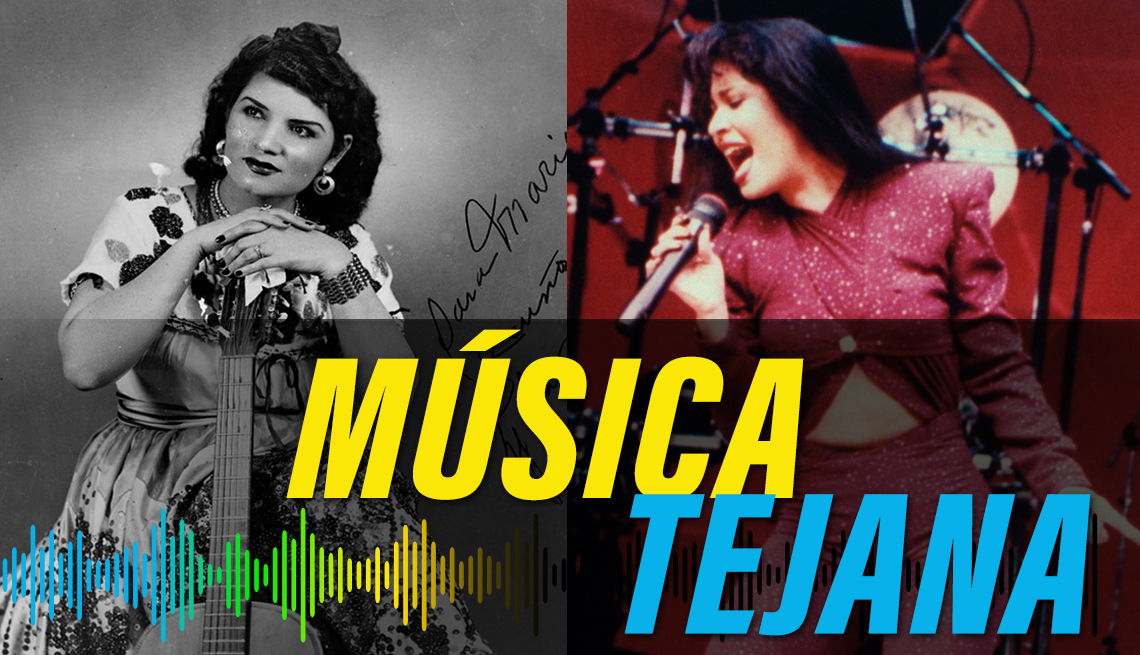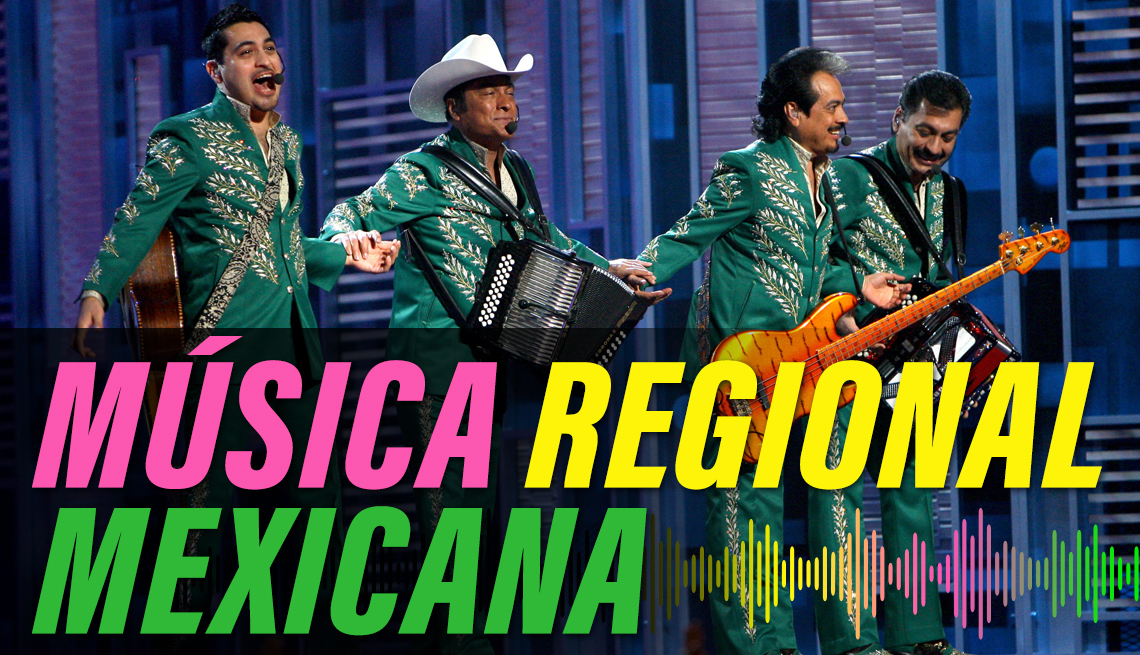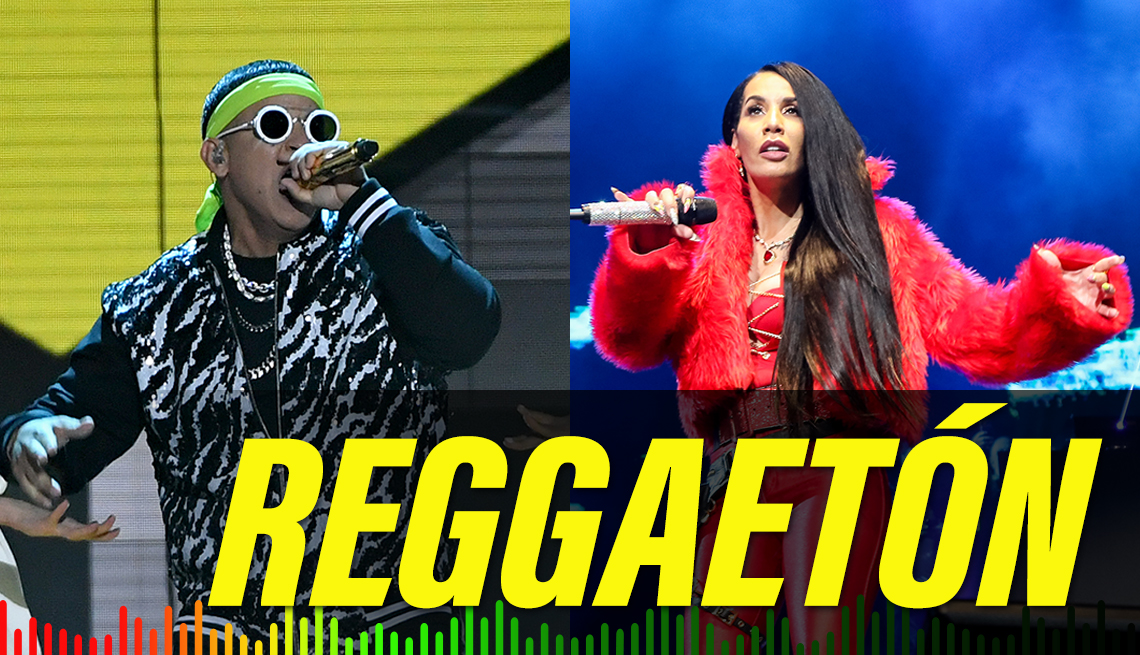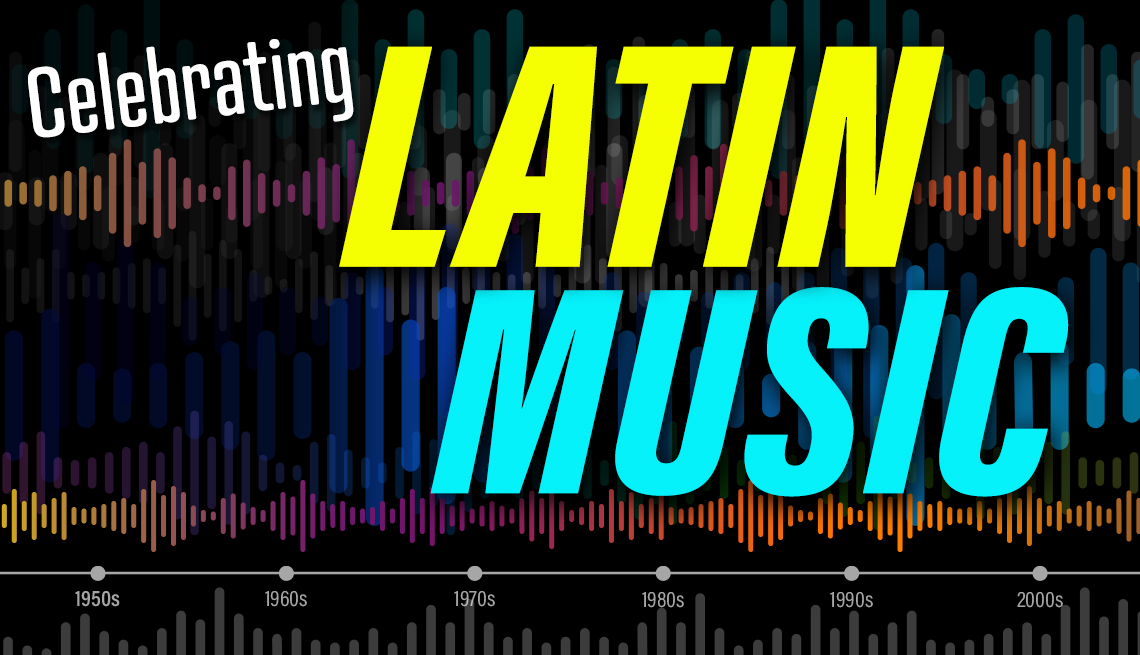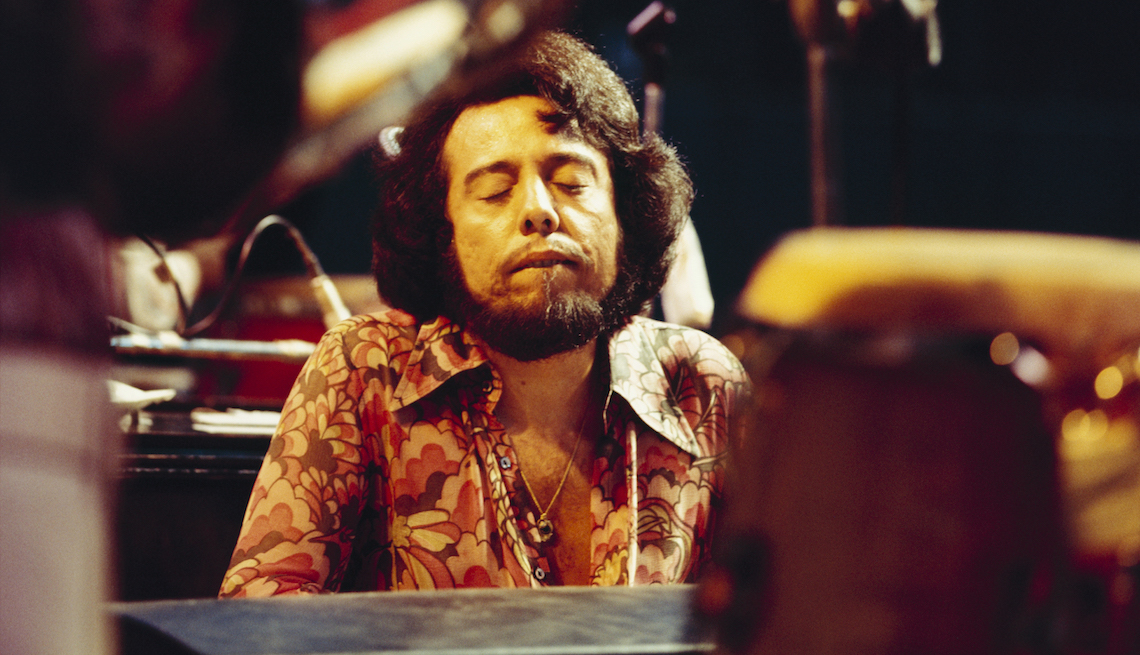Latin Music in America: Through the Years
A chronological look at the origins, artists and essential albums that comprise the genre
by Ernesto Lechner, AARP, September 3, 2019
- |
- Photos
-
- 1 of
PHOTO BY: Redferns/Getty/AARP
Astor Piazzolla performs live on stage at The North Sea Jazz Festival in The Hague, Holland on July 12 1985
ORIGINATED IN: 1900s
HAILS FROM: Argentina
ESSENTIAL ALBUM: Astor Piazzolla – Adiós Nonino (1972)En español | Initially frowned upon for its working-class roots, tango employed the bandoneón—a type of accordion brought over by German migrants—to enhance this music’s bitter tales of longing and sordid love affairs. At the beginning of the 20th century, tango spread in Europe and the U.S. Decades later, Astor Piazzolla elevated tango to a sophisticated art form with influences of jazz and classical.
-
- 2 of
PHOTO BY: Michael Ochs/Getty/AARP
Tito Puente and his band performing, circa 1977, with the label mambo
ORIGINATED IN: 1950s
HAILS FROM: Cuba
ESSENTIAL ALBUM: Tito Puente – Dance Mania (1958)In the ’50s, the fiery mambo and sinuous cha- cha reigned supreme. Based on traditional Cuban music, these styles blossomed in the hands of electrifying bandleaders such as Pérez Prado, Tito Puente, Tito Rodríguez and Machito.
-
- 3 of
PHOTO BY: Jack Vartoogian/Getty/AARP
Cuban-American salsa singer Celia Cruz (1925 - 2003) performs at the JVC Jazz Festival concert 'Two Divas and a Lion' at Carnegie Hall, New York, New York, July 1, 1995.
ORIGINATED IN: 1960s
HAILS FROM: New York
ESSENTIAL ALBUM: Eddie Palmieri – Azúcar Pa’ Ti (1965)In the late ’60s, U.S.- based Afro Caribbean musicians fused dance structures from Cuba with a Puerto Rican sensibility and the influence of American jazz, funk and R&B. The result was an edgy new genre that took over the world. Salsa made stars of Johnny Pacheco, Rubén Blades, Celia Cruz, Willie Colón, Eddie Palmieri and mega-orchestra Fania All Stars.
-
- 4 of
PHOTO BY: Michael Ochs Archives/Getty Images/AARP
Mexican-American band "El Chicano" including members Bobby Espinosa (second from left) Andre Baeza (center top), Mickey Lesperon (center bottom) and Rudy Regalado (second from right) pose for a portrait in circa 1971
ORIGINATED IN: 1970s
HAILS FROM: U.S. and Latin America
ESSENTIAL ALBUM: Café Tacvba – Avalancha de Éxitos (1996)Heading into the ‘70s, the influence of the Beatles, the Rolling Stones and Bob Dylan motivated a generation of young Latinos to pick up electric guitars and compose rock anthems. El Chicano formed in Los Angeles. Later came Argentina’s Soda Stereo and Mexico’s Caifanes.
-
- 5 of
PHOTO BY: WireImage/Getty/AARP
Juan Luis Guerra, Spirit of Hope Award Recipient during 2005 Billboard Latin Music Awards - Show at Miami Arena in Miami, Florida, United States.
ORIGINATED IN: 1970-90s
HAILS FROM: Dominican Republic
ESSENTIAL ALBUM: Juan Luis Guerra – Bachata Rosa (1990)With the influx of Dominican immigrants in New York City, two notoriously sensuous formats gained prominence: the merengue, with syncopated brass riffs at a blistering speed, and the smoldering bachata, based on bongo beats and spidery guitar lines. In the ’90s, singer-songwriter Juan Luis Guerra infused both with poetry and verve.
-
- 6 of
PHOTO BY: iHeart Radio/Wireimage/ Getty/AARP
Ricky Martin performs onstage during the iHeartRadio Fiesta Latina: Celebrating Our Heroes at American Airlines Arena on November 4, 2017 in Miami, Florida. Shakira performs during the 'El Dorado World Tour' during the 'El Dorado World Tour' at The O2 Arena on June 11, 2018 in London, England.
ORIGINATED IN: 2000s
HAILS FROM: Spain, Latin America and U.S.
ESSENTIAL ALBUM: Shakira - Sale El Sol (2010)At the turn of the millennium, a generation of bilingual pop stars brought Latin music into the American mainstream. Puerto Rico’s Ricky Martin, Spain’s Enrique Iglesias (son of Julio) and Colombia’s Shakira switch seamlessly from Spanish to English, creating a hybrid of pan-Latin rhythms with a pop aesthetic.
-
- 7 of
PHOTO BY: Alamy/the LIFE Images Gallery/Getty/AARP
Lydia Mendoza en la pagina The Portal to Texas History. Mexican singer Selena performing in concert in 1995
ESSENTIAL ALBUM: Selena: Amor prohibido (1994)
The European migrants who arrived in Texas—after escaping the Mexican revolution—brought with them the ancestral sounds of the accordion, the polkas, and waltzes. In the decades that followed, these sounds would mix organically with the influence of mariachi, corridos, cumbia and jazz, and the emergence of rock'n'roll. The formidable Lydia Mendoza, a trailblazer in the genre, was followed by stars such as Flaco Jiménez, La Mafia, and Intocable. In the 90's, the charismatic Selena fused Texan aesthetics and a pop sensibility to become the lead representative of the genre before being murdered at the age of 23.
-
- 8 of
PHOTO BY: Michael Tran/Getty/AARP
Los Tigres Del Norte perform onstage during the 9th Annual Latin Grammy Awards held at Toyota Center on November 13, 2008 in Houston, Texas.
ESSENTIAL ALBUM: Los Tigres del Norte: Jefe de jefes (1997)
Mexican music is rich in nuance and passion. Employing the mysticism of violins and traditional mariachi trumpets, ranchera songs narrate the stories of embittered loves and patriotic devotion. Flagged by extraordinary bands such as Los Tigres del Norte and Los Tucanes de Tijuana, norteña music favors the accordion as its main protagonist, with edgy bass sounds and lush harmonious vocals. Originally from the state of Sinaloa, but now popular throughout Mexico and the United States, band music is epic and grandiose, with lavish orchestras that include clarinets, tubas, and syncopated percussion.
-
- 9 of
PHOTO BY: Ethan Miller/John Parra/Getty/AARP
Daddy Yankee performs during the 2019 Billboard Latin Music Awards at the Mandalay Bay Events Center on April 25, 2019 in Las Vegas, Nevada. Ivy Queen performs at Miami Bash 2017 at American Airlines Arena on April 23, 2017 in Miami, Florida.
ESSENTIAL ALBUM: Varios artistas: Los Cocorocos (2006)
Before reggaeton captivated the world’s imagination with Daddy Yankee's Gasolina, and Luis Fonsi's Despacito, Panama already had a version of reggae that prompted the savvy singer-songwriter El General to establish the foundation of this volatile and catchy genre. In Puerto Rico, artists like Tego Calderón, Ivy Queen, and Don Omar built upon this foundation—adding a mélange of tropical influences and continental U.S. rap—to develop contemporary reggaeton. Nowadays, this rhythm is part of the DNA of Latin music, influencing pop, reggae, bachata, and salsa musicians.

